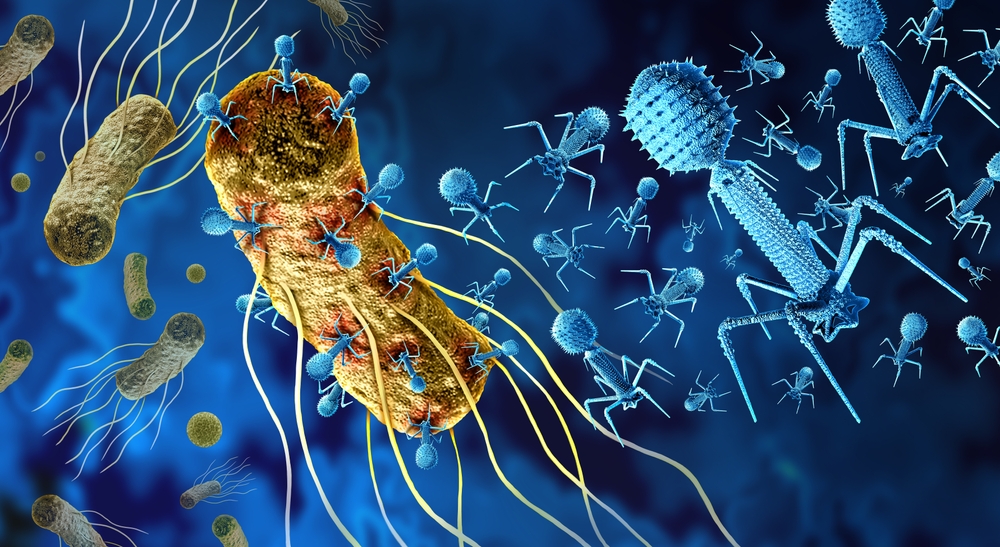As antibiotic resistance accelerates into a global health emergency, scientists are turning to an unlikely ally – viruses that kill bacteria.
Now, new research from the University of Southampton has revealed how these viruses, known as phages, could be engineered to outsmart the sophisticated defences of antibiotic-resistant bacteria.
This breakthrough sheds light on a previously unknown bacterial defence mechanism and marks a critical step toward developing next-generation treatments that could one day replace failing antibiotics.
Phages: Nature’s bacterial predators
Phages, often described as ‘bacteria eaters,’ are viruses that specifically target and destroy bacterial cells while leaving human cells unharmed.
Their unique ability to infiltrate and kill bacteria makes them promising candidates in the ongoing search for treatments against drug-resistant infections.
Phages resemble microscopic syringes with legs. Once they latch onto a bacterium, they inject their genetic material, hijacking the cell’s machinery to replicate themselves.
This ultimately causes the bacterial cell to burst, releasing a new wave of phages to continue the assault.
However, bacteria have evolved intricate defences to ward off these viral invaders – one of the most prevalent being a system scientists have named Kiwa.
Kiwa: A molecular firewall
Named after a protective oceanic deity from Māori mythology, Kiwa acts as a biological security system.
Dr Franklin Nobrega, Associate Professor at the University of Southampton and National Institute for Health and Care Research (NIHR) Southampton Biomedical Research Centre (BRC) Unit, explained: “In bacteria, Kiwa acts as a guardian, defending against phages, and is one of the most common defence mechanisms bacteria have.”
The Southampton researchers used cutting-edge imaging techniques to decode this complex defence mechanism. They found that Kiwa consists of two molecular components – KwaA and KwaB.
KwaA functions as a sensor that detects invading phages, while KwaB acts as the response unit, binding to and deactivating the phage’s DNA before it can seize control of the bacterial cell. This two-step mechanism effectively builds a molecular barrier against phage attacks.
Phages strike back with decoys
But phages, like digital hackers, have developed counter measures. Some release a mimic protein, dubbed Gam, which tricks KwaB into reacting to a false threat.
While Kiwa targets the decoy, the actual phage DNA slips past unnoticed and begins its destructive work inside the bacterium.
Despite this clever tactic, Kiwa isn’t the only line of defence bacteria possess. Another mechanism, called RecBCD, can also identify and destroy phage DNA.
While phage decoys can individually fool Kiwa or RecBCD, they fail when both systems operate together, presenting a double lock that’s far harder to pick.
The urgent need to tackle antibiotic resistance
Antibiotic resistance is a growing public health crisis.
Experts predict that drug-resistant infections could cause up to 10 million deaths annually by 2050, and the NHS already spends around £180m per year dealing with such cases. With few new antibiotics in development, phage therapy is being revisited as a viable solution.
The team at Southampton is actively collecting and cataloguing phages capable of bypassing bacterial defences. To date, they have identified over 600 potential candidates.
In a novel citizen science initiative, they are inviting the public to send in samples of dirty water, a rich source of phages and bacteria, to help expand their research.
Nobrega added: “By improving our understanding of how these defence mechanisms operate, we can work out how to exploit weaknesses and select phages which have the best chance of breaking down the bacteria.
“The more samples we are able to obtain, the better our chances of finding the best phages for the job.”
Towards a phage-powered future
Understanding how bacterial defence systems like Kiwa operate and how phages can neutralise them could be the key to developing effective treatments for antibiotic-resistant infections.
By harnessing the evolutionary arms race between phages and antibiotic-resistant bacteria, scientists hope to stay one step ahead in protecting human health.
As research continues, these insights may transform how we approach some of the world’s deadliest bacterial threats, offering a new line of defence when antibiotics fail.
